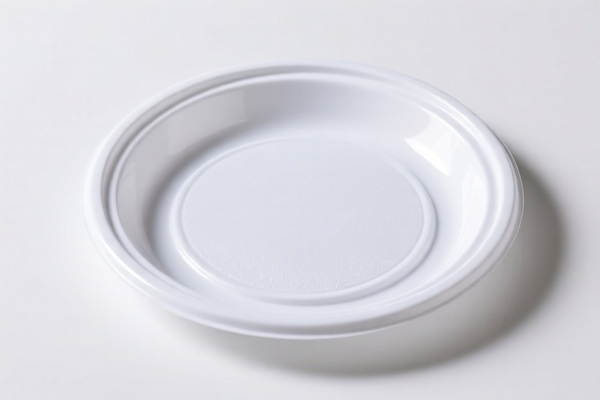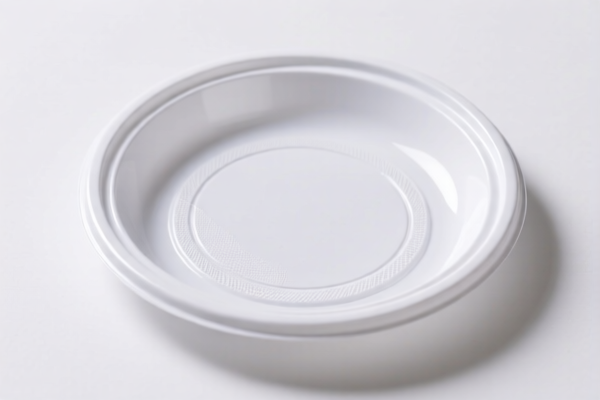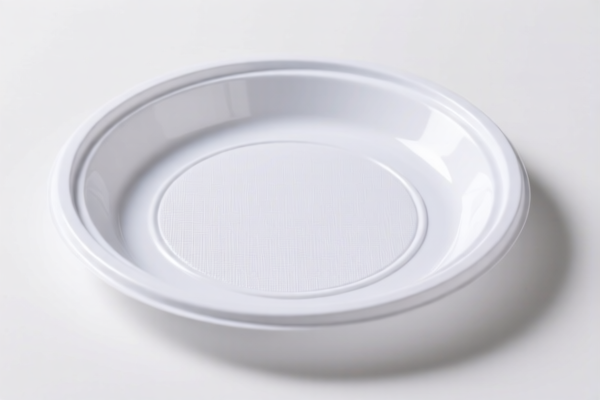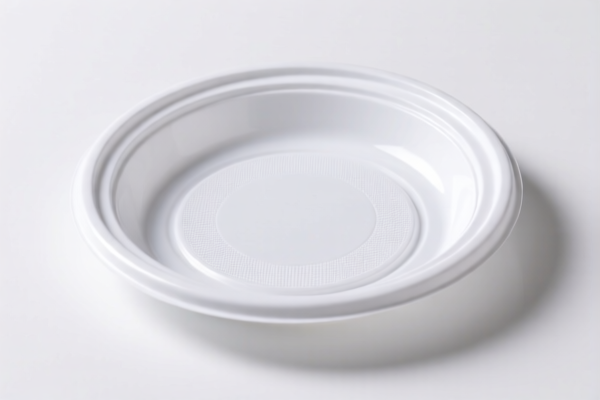| HS Code | Official Doc | Tariff Rate | Origin | Destination | Effective Date |
|---|---|---|---|---|---|
| 3920100000 | Doc | 59.2% | CN | US | 2025-05-12 |
| 3920995000 | Doc | 60.8% | CN | US | 2025-05-12 |
| 3921904090 | Doc | 34.2% | CN | US | 2025-05-12 |
| 3921905050 | Doc | 34.8% | CN | US | 2025-05-12 |
| 8215992000 | Doc | 0.5¢ each + 3.2%+30.0% | CN | US | 2025-05-12 |
| 8215995000 | Doc | 35.3% | CN | US | 2025-05-12 |
| 8214909000 | Doc | 1.4¢ each + 3.2%+30.0% | CN | US | 2025-05-12 |




Plastic Plate
A plastic plate is a flat, typically round dish used for serving food. It is constructed from plastic, offering a lightweight and often disposable alternative to traditional ceramic, glass, or metal plates.
Material
Plastic plates are manufactured from various types of plastic, each possessing different properties:
- Polypropylene (PP): A common, affordable plastic known for its heat resistance and flexibility. Frequently used for disposable plates.
- Polystyrene (PS): Inexpensive and rigid, often used for cold food applications. Less heat resistant than PP.
- Melamine: A hard, durable plastic offering a more reusable and higher-quality option. Often mimics the look of ceramic.
- PET (Polyethylene Terephthalate): Often used for clear, reusable plates, offering good clarity and strength.
- PLA (Polylactic Acid): A biodegradable plastic derived from renewable resources like cornstarch, used for compostable plates.
Purpose
The primary purpose of plastic plates is to provide a convenient surface for holding and serving food. They are widely used in situations where breakage is a concern, cleanup needs to be fast, or a disposable option is desired.
Function
Plastic plates function as a barrier between food and the user's hands or table surface. They support the weight of the food and facilitate easy transport of meals. Their smooth surface simplifies eating.
Usage Scenarios
- Picnics and Outdoor Events: Lightweight and durable, ideal for transport and use in informal settings.
- Parties and Gatherings: Disposable plates simplify cleanup after events.
- Camping: Lightweight and easy to pack.
- Fast Food and Takeout: Commonly used for serving food quickly and efficiently.
- Children's Meals: Less prone to breakage compared to ceramic or glass.
- Everyday Use: Reusable plastic plates are used as a cost-effective alternative to more fragile dishware.
Common Types
- Disposable Plates: Single-use plates made from PP or PS, often inexpensive and readily available.
- Reusable Plates: Made from more durable plastics like Melamine or PET, designed for multiple uses and washing.
- Sectioned Plates: Plates divided into compartments to keep different foods separate. Common for children's meals or portion control.
- Heavy-Duty Plates: Thicker, more rigid plates designed to hold heavier foods.
- Compostable Plates: Made from PLA or other biodegradable materials, suitable for composting.
- Paper Plates with Plastic Coating: Combine the convenience of paper with a water-resistant plastic lining.
Plastic plates fall under several potential classifications depending on their specific characteristics. Here's a breakdown of relevant HS codes based on the provided information:
- 3920.10.00.00: This code covers “Other plates, sheets, film, foil and strip, of plastics, noncellular and not reinforced, laminated, supported or similarly combined with other materials: Of polymers of ethylene”. This would apply to plastic plates made from polyethylene (PE), such as those used for disposable tableware. The total tax rate is 59.2%, comprised of a 4.2% base tariff, a 25.0% additional tariff, and a 30.0% additional tariff effective April 2, 2025.
- 3920.99.50.00: This code covers “Other plates, sheets, film, foil and strip, of plastics, noncellular and not reinforced, laminated, supported or similarly combined with other materials: Of other plastics: Of other plastics: Other”. This applies to plastic plates made from plastics other than polymers of ethylene. The total tax rate is 60.8%, comprised of a 5.8% base tariff, a 25.0% additional tariff, and a 30.0% additional tariff effective April 2, 2025.
- 3921.90.40.90: This code covers “Other plates, sheets, film, foil and strip, of plastics: Other: Other: Flexible Other”. This could apply to flexible plastic plates. The total tax rate is 34.2%, comprised of a 4.2% base tariff and a 30.0% additional tariff effective April 2, 2025.
- 3921.90.50.50: This code covers “Other plates, sheets, film, foil and strip, of plastics: Other: Other: Other Other”. This could apply to other plastic plates not specifically categorized elsewhere. The total tax rate is 34.8%, comprised of a 4.8% base tariff and a 30.0% additional tariff effective April 2, 2025.
Important Note: The applicable tariff rates are subject to change. A 30.0% additional tariff will be applied to several of these HS codes starting April 2, 2025.
Customer Reviews
带有塑料盘示例的图片库很棒。它帮助我直观地了解我所处理的产品。
该页面有很多有用的信息,但关税率有些令人困惑。更清晰的分解将会很有帮助。
材料部分非常有信息量。我了解了PP和PS塑料,这帮助我为我的产品选择了正确的HS编码。
HS编码3921904090的分解及其34.2%的关税率正好是我出口计划所需要的。
关于常见塑料板类型的章节对我帮助很大。它让我更好地理解了我所处理的产品。